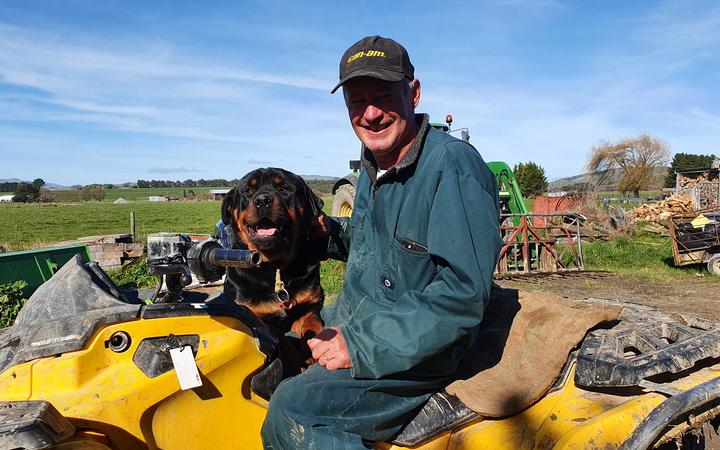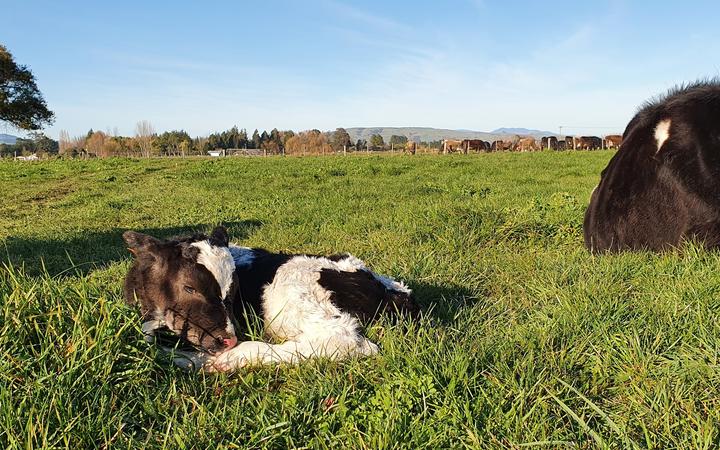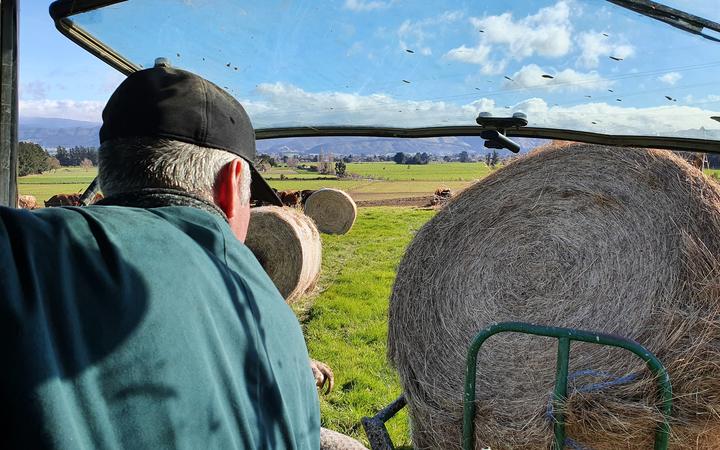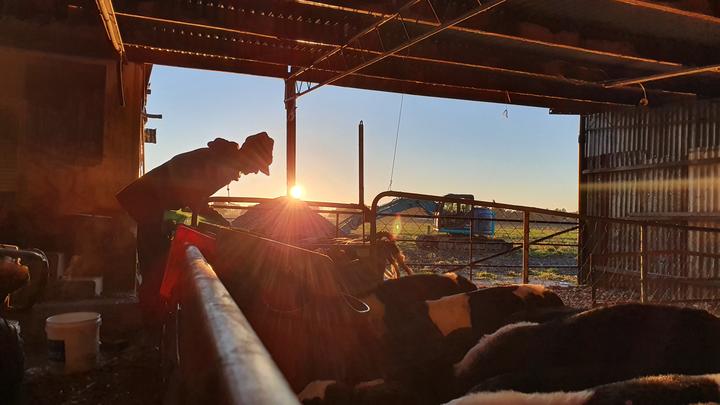
They’re not only doing the usual milking and maintenance but watching over their herds as they calve.
Country Life Producer Sally Round got up before the birds and put on her wet weather gear to meet Wairarapa dairy farmer Jody James and his team to find out what happens.
It’s pitch black and the temperature has plunged.
I’ve layered up but I forgot to bring my gloves. The metal of my microphones is painful to touch, it’s so cold.
I had set my alarm for 4.30am, clothes laid out the night before, Country Life recording equipment lying by the door.
I wanted to be a fly on the wall with a dairy farmer in “the thick of calving” so had arranged to meet Jody James, a fourth generation dairy farmer, before sunrise at his farm on the outskirts of Carterton.
Jody runs two mobs of cows on 200 hectares – Jerseys, like his great grandfather did here in the late 1800s – and a herd of Friesians. He’s about half way through calving his 500 cows.
I’m with Jody in the jeep as it crawls behind the cows that have already calved. They’re heading into the herringbone milking shed.
“Right at the back here is Dopey. She’s a bit of a cool old pet, everybody loves her,” he says.
“She’s always at the back. If you know you’ve got her, you’ve got them all.”

The cows had a few weeks off before they calved.
They have a calf each year in order to keep the milk flowing.
Jody’s herd calves from mid July to the end of September. It’s starting to ease now – about ten calves are arriving daily.
Keeping an eye on the expectant mothers, making sure they have the right amount of feed, giving the calves their fill as well as milking the herd means 11 to 12 hour days, seven days a week.

He has two workers but needs another.
“Yeah, a bit tough at the moment getting staff. It used to be word of mouth and someone would turn up round here.
“It just seems a bit different at the moment.
“My staff are pretty good. They realise the situation, they’re digging in as well.”
I join Steve McEntee who’s been working on the farm for nearly 17 years as he heads out to check the pregnant cows.
It’s calm and quiet but freezing and there’s the squelch of mud underfoot after persistent rain.
I stick close to Steve and his torch, careful not to get in the way of the cows looming out of the darkness. It’s a bit disorienting and I’m trying not to stumble.
I see soft brown eyes and a flash of long eyelashes blinking in the torchlight.
“They’re happy at the moment,” Steve says. At this time of the morning they’re all settled so it’s easy not to mix up mother and calf.”
Hail and rain earlier in the week meant difficult calving weather and there had been a couple of breech births, needing the vet.

“Normally in bad weather, they all want to drop at once,” Steve says.
“In bad weather you come out the next morning and you’re a bit worried about what you’re going to find.”
The cows are moved into a fresh drier paddock where they will get oats and hay when daylight comes.
We spot a newborn, wobbly on its spindly legs, its umbilical cord dangling down, its mother close by.
She’s about six hours old, Steve says, bringing out a worn notebook to jot down the details and attach a tag around her neck.
She will be separated from her mum later in the day and taken to the calf sheds where she will be reared with about 120 others as replacements for the herd.
Separation so soon can be an emotive subject and I must admit, I’m feeling unsure about the whole idea myself.
Jody explains if you leave it for a few days there’s a stronger bond and taking the calf off its mother within 24 hours is a lot easier on the cow.
He says as long as the calf has had a first suck of colostrum they’re good to go.
The males – the bobby calves – are sent off to the works and turned into veal for export.

The calf sheds are where I meet another worker on the farm, Maree Hull, later in the morning. The sun’s just come up and she’s brought down big tubs of warm, nutrient-rich colostrum for the calves.
They’re lazing in the sun in enclosures dotted around several outbuildings away from the milking shed.
“This is their new mum now,” Maree says as they line up at the calfeteria, a bucket with multiple teats at the bottom.
Their tails wiggle and the frothy liquid dribbles down as they gulp their fill.
The morning milking and feeding over and cow checks done, it’s time for Jody and his team to have their breakfast before they head out again.
They’ll be moving the breaks, feeding out, checking on the pregnant cows and getting any urgent maintenance jobs out of the way before milking starts again mid-afternoon.

























